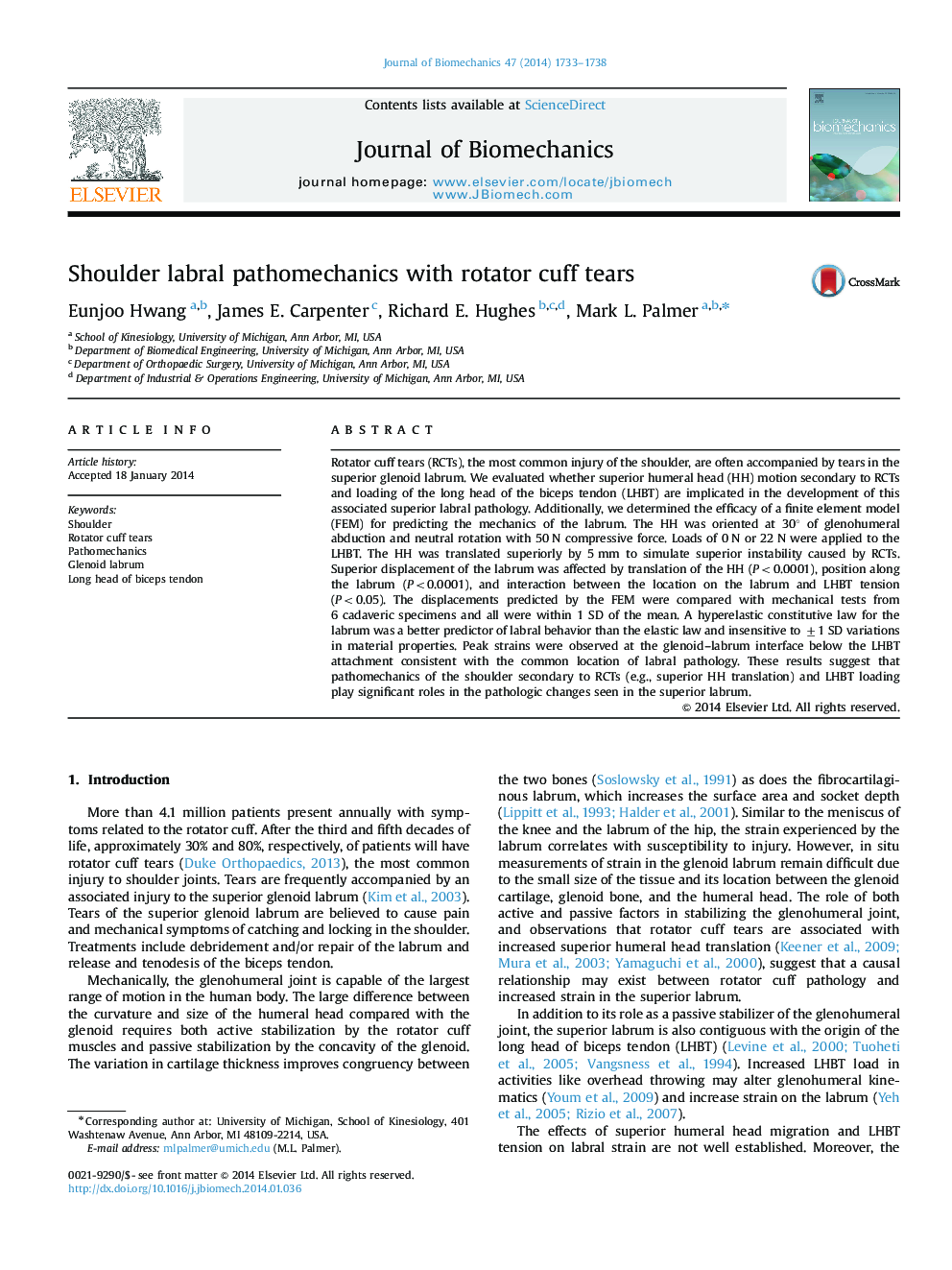| کد مقاله | کد نشریه | سال انتشار | مقاله انگلیسی | نسخه تمام متن |
|---|---|---|---|---|
| 10432276 | 910242 | 2014 | 6 صفحه PDF | دانلود رایگان |
عنوان انگلیسی مقاله ISI
Shoulder labral pathomechanics with rotator cuff tears
ترجمه فارسی عنوان
پاتولوژی مکانیکی شانه للبال با اشک کاف روتاتور
دانلود مقاله + سفارش ترجمه
دانلود مقاله ISI انگلیسی
رایگان برای ایرانیان
کلمات کلیدی
موضوعات مرتبط
مهندسی و علوم پایه
سایر رشته های مهندسی
مهندسی پزشکی
چکیده انگلیسی
Rotator cuff tears (RCTs), the most common injury of the shoulder, are often accompanied by tears in the superior glenoid labrum. We evaluated whether superior humeral head (HH) motion secondary to RCTs and loading of the long head of the biceps tendon (LHBT) are implicated in the development of this associated superior labral pathology. Additionally, we determined the efficacy of a finite element model (FEM) for predicting the mechanics of the labrum. The HH was oriented at 30° of glenohumeral abduction and neutral rotation with 50 N compressive force. Loads of 0 N or 22 N were applied to the LHBT. The HH was translated superiorly by 5 mm to simulate superior instability caused by RCTs. Superior displacement of the labrum was affected by translation of the HH (P<0.0001), position along the labrum (P<0.0001), and interaction between the location on the labrum and LHBT tension (P<0.05). The displacements predicted by the FEM were compared with mechanical tests from 6 cadaveric specimens and all were within 1 SD of the mean. A hyperelastic constitutive law for the labrum was a better predictor of labral behavior than the elastic law and insensitive to ±1 SD variations in material properties. Peak strains were observed at the glenoid-labrum interface below the LHBT attachment consistent with the common location of labral pathology. These results suggest that pathomechanics of the shoulder secondary to RCTs (e.g., superior HH translation) and LHBT loading play significant roles in the pathologic changes seen in the superior labrum.
ناشر
Database: Elsevier - ScienceDirect (ساینس دایرکت)
Journal: Journal of Biomechanics - Volume 47, Issue 7, 7 May 2014, Pages 1733-1738
Journal: Journal of Biomechanics - Volume 47, Issue 7, 7 May 2014, Pages 1733-1738
نویسندگان
Eunjoo Hwang, James E. Carpenter, Richard E. Hughes, Mark L. Palmer,
